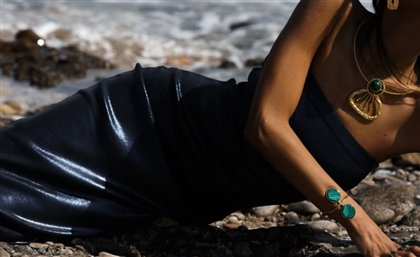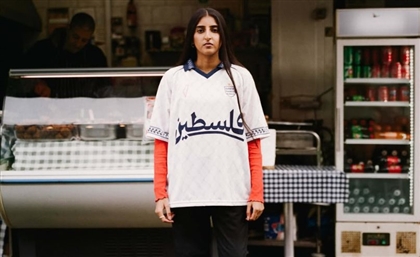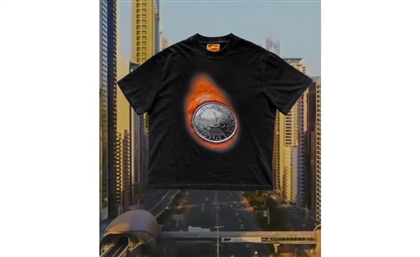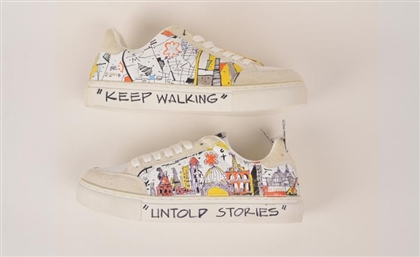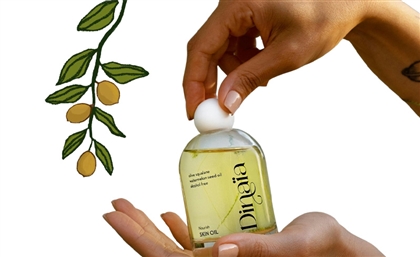Lebanese Jeweler Katarina Tarazi on the Alchemy of Crafting Emotions
More than gorgeous works of art, Tarazi's jewels beautifully marry technical precision with sentimentality and history.
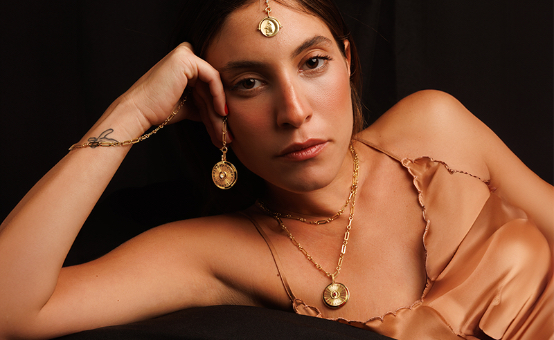
“We are not eternal and so every moment, even the present, is transient and makes me feel nostalgic.”
With aeons of art and history in her arsenal, British-Lebanese jeweller Katarina Tarazi is pushing the boundaries of what fine jewellery can be. As the visionary founder of her eponymous brand, Tarazi combines meticulous technical skill with whimsical storytelling to create one-of-a-kind pieces that swirl, spin, and effortlessly glide, finding their roots in innocent childhood games once played in school courtyards.
Born into a multi-generational family of Lebanese artisans and craftsmen going back decades, if not centuries, Tarazi grew up immersed in various rich cultures, cultivating an early appreciation for how even the most unassuming material objects may gather within their crevices and intricacies deep personal meanings over time. Most formative was Tarazi's childhood fascination with beautifully crafted Victorian miniatures that spun or opened secret compartments, a fascination that would come to define her innovative work.
Following studies in psychology, anthropology and later gemology, Tarazi honed her technical craftsmanship and left the British isles for Beirut to work with master jewellers to bring her mechanical jewellery visions to life. Each Tarazi piece is the meticulous result of months of research, sketches, prototypes, and refinement until the vision is perfected, infusing French, English, Greek, and Middle Eastern historical and cultural narratives into every detail of the design process.

Tarazi launched her brand in 2021 to positive acclaim. Her collections— Marguerite, Ra, Renatus, and Nereid—house exquisite tactile treasures that spark imagination. The Marguerite Collection pays homage to Tarazi's memories of childhood rituals and French romance. Within the Ra Collection, intricate Zodiac pieces celebrate the astrological obsessions of Ancient Egypt. Renatus is inspired by the mystic traditions of the Italian Renaissance tarot. Even the smallest Nereid starfish honours Poseidon's underwater Greek myths.
More than gorgeous works of art, Tarazi's jewels beautifully marry technical precision with sentimentality. Through meticulous miniaturisation, even the tiniest piece incorporates enchanting motion. Tarazi’s pieces give those who don them nothing short of magic, imparting comfort in rituals of spinning, twisting, and admiring jewellery that truly comes to life.
Tarazi's one-of-a-kind treasures embrace life's inherent changes while sparking wonder in everyday moments. With equal parts creative vision and mastery of craft, Katarina Tarazi’s conceptual designs and expert productions imprint cherished stories and feelings onto precious pieces meant to be kept close, worn, played with, and remembered for lifetimes.
SceneStyled recently had the pleasure of a virtual interview with Tarazi, in which the designer spoke from the heart about the experiences that had come to shape her life, and her art.

How did the label Katarina Tarazi and the idea of jewellery in motion come to be?
As a little girl, I’d collect Victorian miniatures that had some sort of secret mechanical aspect to them. I wished I could wear them as jewellery on my person so that I would never lose them. I had a silver necklace made of a simple cube pendant which would spin around its chain. I wore it every day to school, using it as a stress reliever.
I have OCD and loved playing secret superstitious games with myself. In adulthood, I realised that many have this tendency in them, and that they shamefully repress it as adults. Five years ago, I made my first marguerite prototype, thinking it would be fun to have a pendant that spins for a reason, a pendant that gives an answer to the questions one often irrationally poses.
It was meant to only be mine; I didn’t think people would see its value. It was my little object that looked like nothing special or shiny but that retained a childlike purity I yearned for. When my best friends started to want the marguerite for themselves, I realised that there are many people like me, like us. I decided to study jewellery with the intention of making a proper marguerite one day, and ultimately a proper world.
My world would combine all my fixations. It would house miniature objects that would be carried around, witnessing many lives. These totems would be made of 18k gold to last forever and they’d embody an initial story based on their historical origin.

I'd love to hear all about your Ra collection. What drew you to Ancient Egyptian mythology?
When I was nine years old, I went on an unforgettable trip to Egypt with my family, which marked my childhood in a significant way.
The imagery and stories shared by our tour guide stayed with me forever. This trip played a pivotal role in my personal development. A few years ago, when I decided to do an astrology collection, I did some initial research which led me to Ancient Egypt.
The Dendera temple’s ceiling is believed to be the first astrological map. I was happy that my zodiac collection would be informed by Egyptology; it’s a journey filled with storytelling, amulets, and magic. But this would be my biggest challenge to date, I had to create 12 essentially distinct totems that are Ancient Egyptian in design, with a mechanism that expresses their unique spirit.
Each zodiac took me a total of 3 months to research, design, and build. I let the universe tell me what sign I should work on next, trusting the process of simply being an observer. Nothing can come by self-imposed force.
Could you walk me through the story behind each of your collections?
The Marguerite was built on my memory of life being as simple as a school playground and the games one would play at that age. Does he love me or not? Does he even exist? And if he does, who around me embodies his soul? The origin of the game of plucking the daisy dates to French Romanticism, hence my Reve d’Amour collection.
The Ra Collection houses the Zodiacs, as well as the Amulets. Ancient Egypt is simply the gift that keeps on giving. I will forever add pieces to the Ra Collection, the most recent of which is the Tutankhamun hand.

The Renatus collection houses my Tarocchi pendant, a piece of jewelry that embodies the tarot deck. The first tarot deck was commissioned by the duke of Milan during the Italian Renaissance, which is why the piece incorporates the cinquedea, a dagger worn by Milanese noblemen. The tarot was meant to be a card game with no beginning and no end, hence the circular shape of the Tarocchi. The Renatus Collection also features the Sole Luna Coin, as it represents the Sun and Moon major arcana of the tarot.
The Nereid Collection is my most recent and is based on Ancient Greek mythology. The Starfish is an ode to Poseidon and his nereids, who accompanied heroes on their journeys across the sea, and who enabled Apollo’s destiny as the founder of the Oracle of Delphi.
The idea of mechanical jewellery that moves is quite unique - was it difficult initially launching?
It took me a year to build a brand identity before launching, and a total of three years to build enough collections to form a holistic world. During that limbo phase, some people appreciated the thought process behind my pieces, while others dismissed them as ‘cute’ but not serious jewellery. Until a vision is fully expressed, one can't anticipate reactions.

How would you describe your own aesthetic and design philosophy?
My totem’s designs are informed by their history. They are topographically rich and detailed. They also express some sort of fleeting emotion engrained in time. My personal ideology is to always embrace change. This means that one must accept the death of a state to allow room for the birth of a new one. No state is permanent. Life is not a linear trajectory; it is composed of many cycles and stories. Imagine a wheel that spins as much as you like. And then imagine many wheels next to it – you can hop on any of them and stay for as long as you like.
I am not the same person I was two years ago, and I might not be the same person in two years’ time. And yet through it all, some things never change; emotions can be felt repeatedly. I see life as a magical game I play with myself and my loved ones, a game where you necessarily win and lose repeatedly.
What inspires you on a spiritual level?
I design pieces that help people cope with life and the changes it entails. When I design a piece of jewellery, I think, ‘what would make the person who wears this happy, safe, loved, appreciated and secure?’ This is nostalgia.
We are not eternal and so every moment, even the present, is transient and makes me feel nostalgic. As a child I wished the world as I saw it would be permanent and final. This is where my trip to Egypt and the teachings of our tour guide played a significant role: since the beginning of time, humankind was in the business of preparing for change.

How did you both come to discover your love for the craft?
I’ve always been picky with jewellery. I’m a picky buyer. My biggest pet peeve is waste in the form of unappreciated purchases. Objects should be limited in quantity and appreciated. During that infamous trip to Egypt, while we were shopping at the souk, we spotted a bunch of scarab bracelets made of carved turquoise stones and nylon strings.
They were mass-produced and inexpensive. My mother asked me if I wanted one. My mind went into an OCD-fuelled spiral. Do I want this bracelet to be part of me? Would I simply discard it once I owned it? What place will this scarab occupy in my life, and do I even want it there? My mother got fed up with my habitual overthinking and bought it for me. In fact, she bought a handful of them.
She gave me one and told me “Never ever hesitate while shopping, because you’ll later come to regret what you didn’t purchase”. She was basically telling me to stop being afraid, to be more careless. That scarab stayed in my bedroom dresser in Beirut until my teenage years. One day, as I was doing my yearly-required room clearance, I threw out the scarab thinking it’s a mass-produced object anyway.
Oh, how I regretted it. Now, if I could, I would wear that scarab every day. It reminds me of my mother, of this pivotal trip, of the worried and fearful little Katy with OCD. I had the presence of mind to keep all my other miniatures and childhood trinkets.
When I made my first marguerite prototype, I learned to embrace my obsessive need for meaning in everything. I realised that the jewellery industry isn’t necessarily synonymous to mass consumption and superficial bling. It can be my marguerite. It can be my scarab. I could have offered that scarab to someone today to let them know how much they mean to me, and it would have given them strength.

What have been some of your favourite moments since you launched?
My favourite moments since I launched were when my family first saw my pieces. They would lovingly laugh and smile as the pieces reminded them of me. My first ever jewellery piece designed for someone was the Y/A I made for Yara, my sister in-law, for her birthday. I drew the mechanical drawing of a pendant – a “Y” for “Yara”, that when swivelled became an “A” for “Alex” my brother.
I thought I could just offer her the drawing, as I was too scared to go all the way and fail. Alex told me to either have the courage to make the piece or to forget about the drawing entirely. I followed his advice. After a month of trial and error, I offered the finished piece to Yara. Her reaction was beautiful – she cried. I had elicited the reaction I wanted – someone understood how much I loved them.
- Previous Article Monochrome Monday: The Wine Red Edition
- Next Article Monochrome Monday: The Electric Blue Edition



